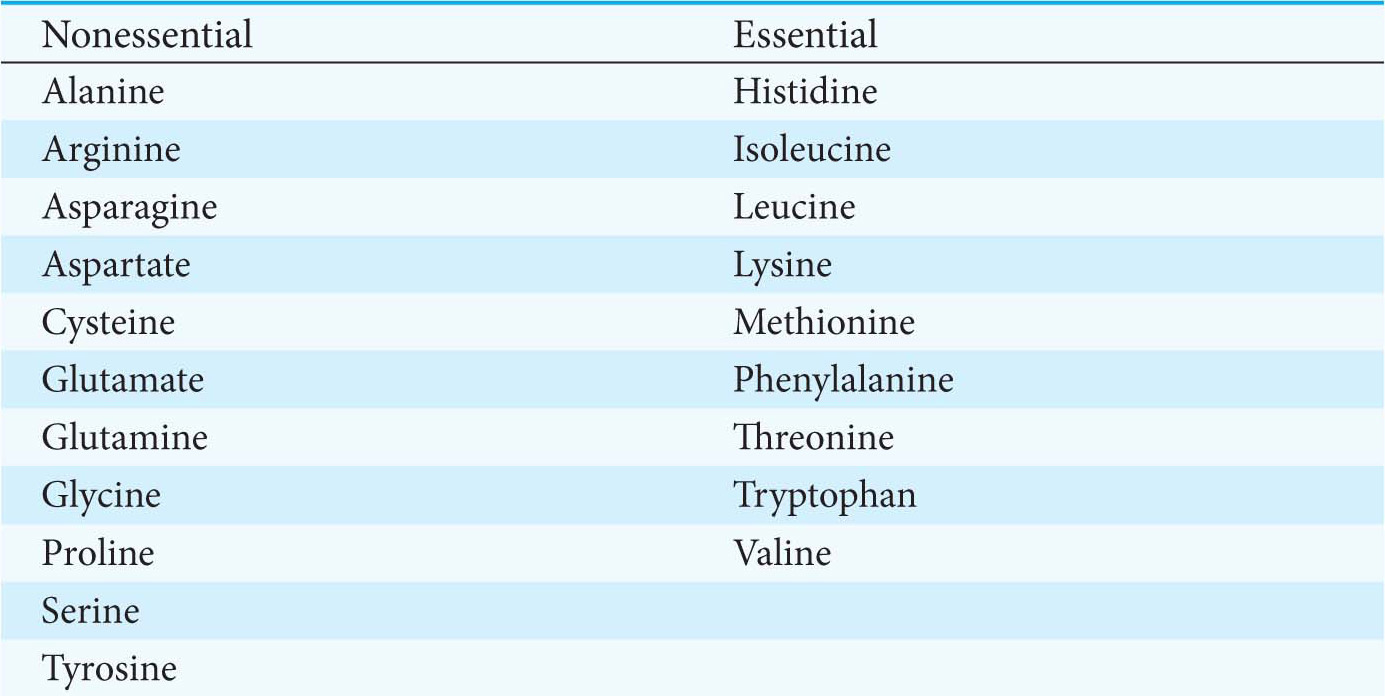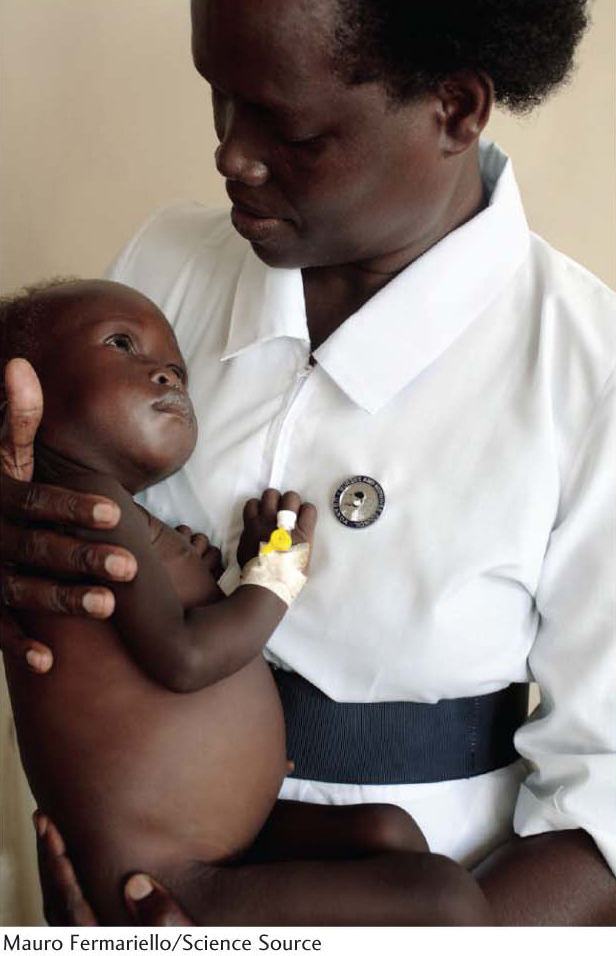
3.3 Essential Amino Acids Must Be Obtained from the Diet
Most microorganisms can synthesize the entire basic set of 20 amino acids, whereas human beings can make only 11 of them. Amino acids that cannot be generated in the body must be supplied by the diet and are termed essential amino acids. The others are called nonessential amino acids (Table 3.2). These designations refer to an organism under a particular set of conditions. For example, a human adult can synthesize enough arginine to meet his or her needs, but a growing child requires more arginine than the body can provide to meet the protein-


 CLINICAL INSIGHT
CLINICAL INSIGHTPathological Conditions Result If Protein Intake Is Inadequate
The importance of amino acids in the diet (usually ingested as proteins) is illustrated by kwashiorkor, a particular form of malnutrition. This condition was first defined in the 1930s in Ghana. Kwashiorkor means “the disease of the displaced child” in the Ga language, a Ghanaian dialect; that is, the condition arises when a child is weaned because of the birth of a sibling. It is a form of malnutrition that results when protein intake is not sufficient. Initial symptoms of the disease are generalized lethargy, irritability, and stunted growth. If treated early enough, the effects of the disease are reversible. However, if not corrected early enough, many physiological systems fail to develop properly, including the brain. For instance, children will suffer from various infectious diseases because their immune systems, composed of many different proteins, cannot be constructed to function adequately. Likewise, the lack of protein prevents the complete development of the central nervous system, with resulting neurological problems.
The most common characteristic of a child suffering from kwashiorkor is a large protruding belly (Figure 3.8). The large belly is a sign not of excess calories but of edema, another result of the lack of protein. Edema is swelling that results from too much water in tissue. Insufficient protein in a child’s blood distorts the normal distribution of water between plasma and surrounding capillaries. Although the swollen belly is most obvious, the limbs of a child suffering from kwashiorkor also are often swollen. Such suffering children are a devastating display of the centrality of protein to life.